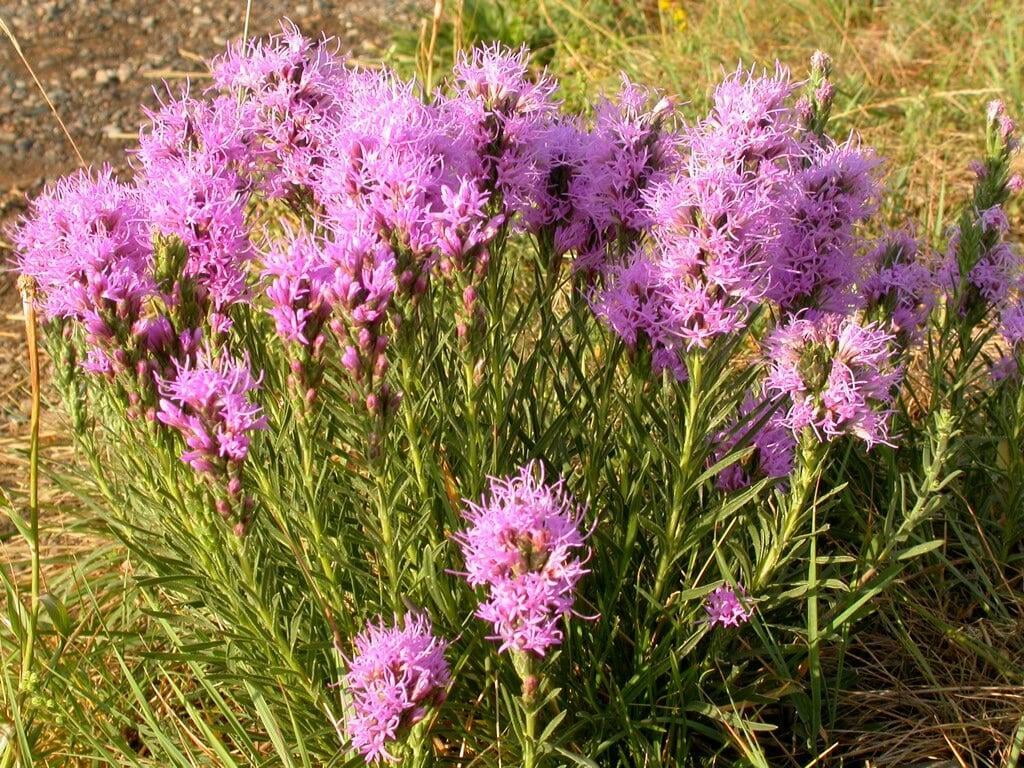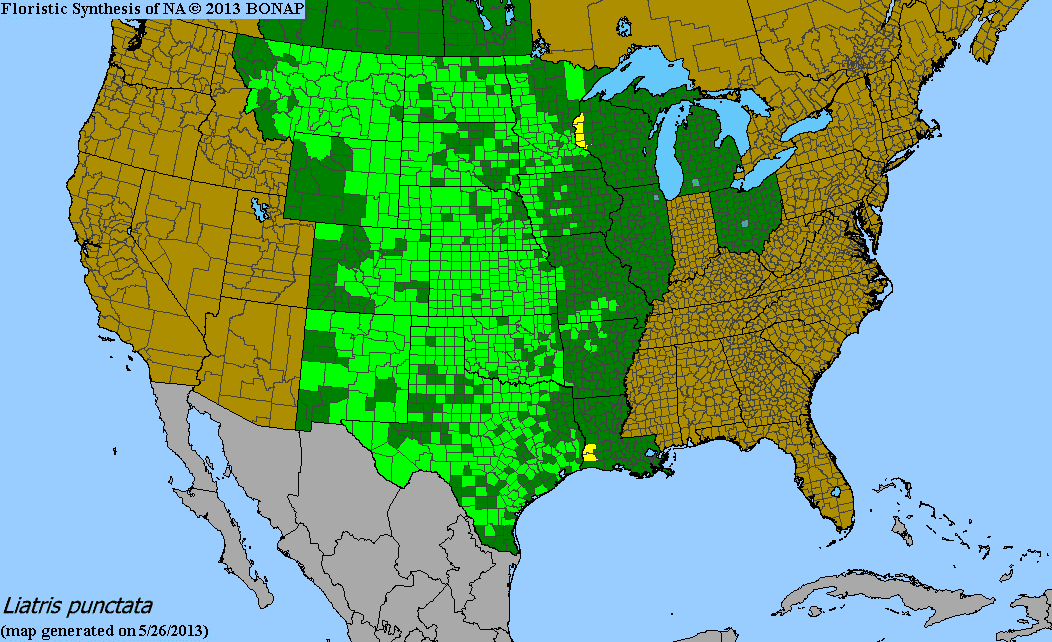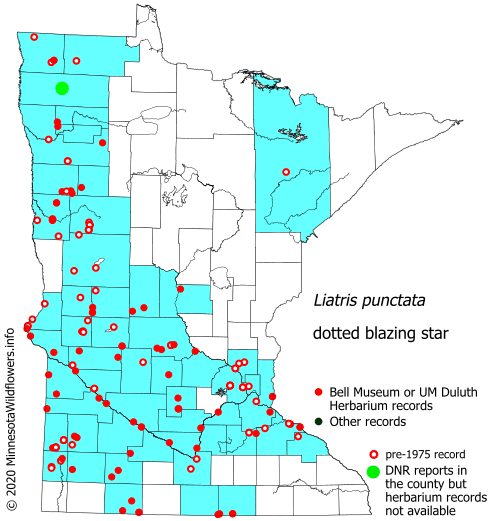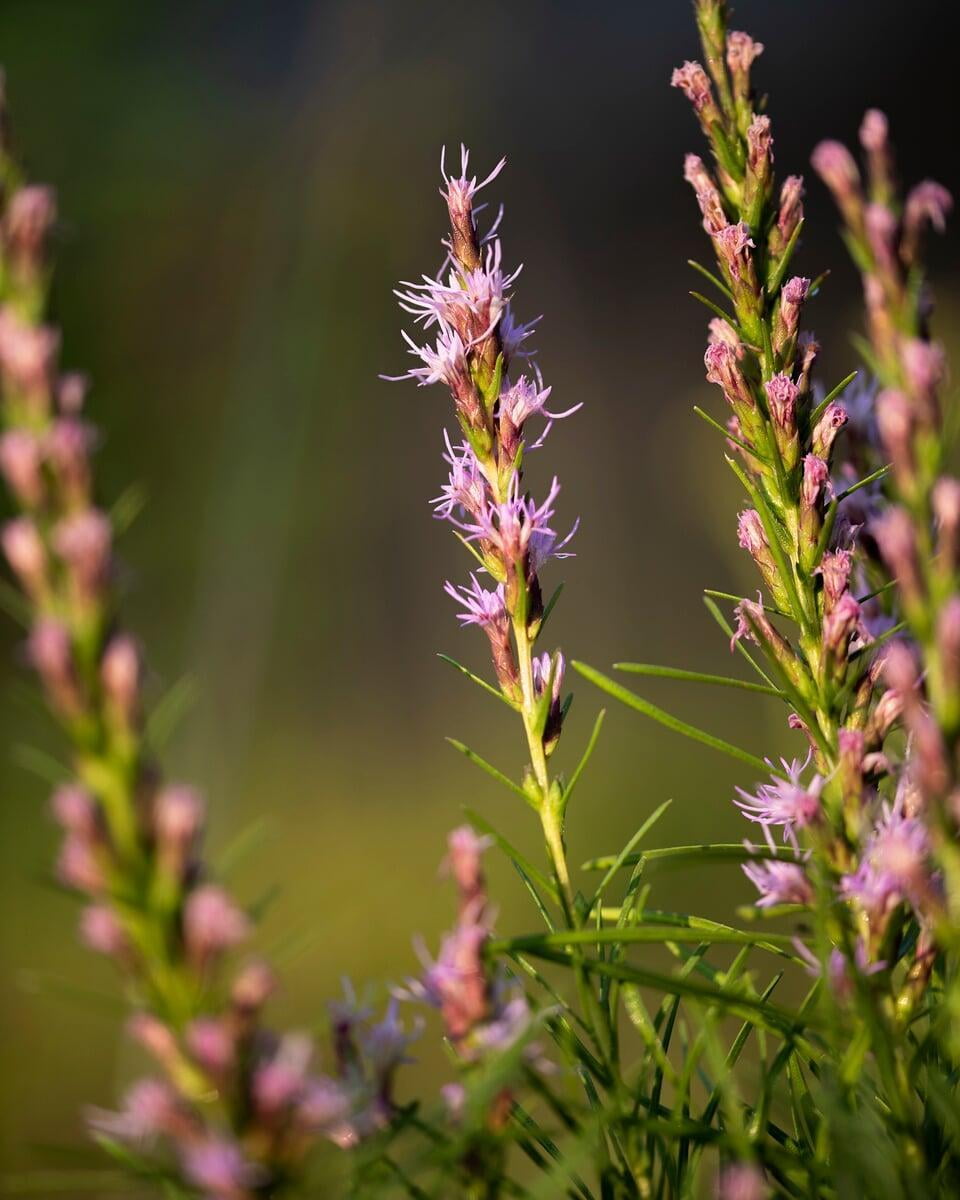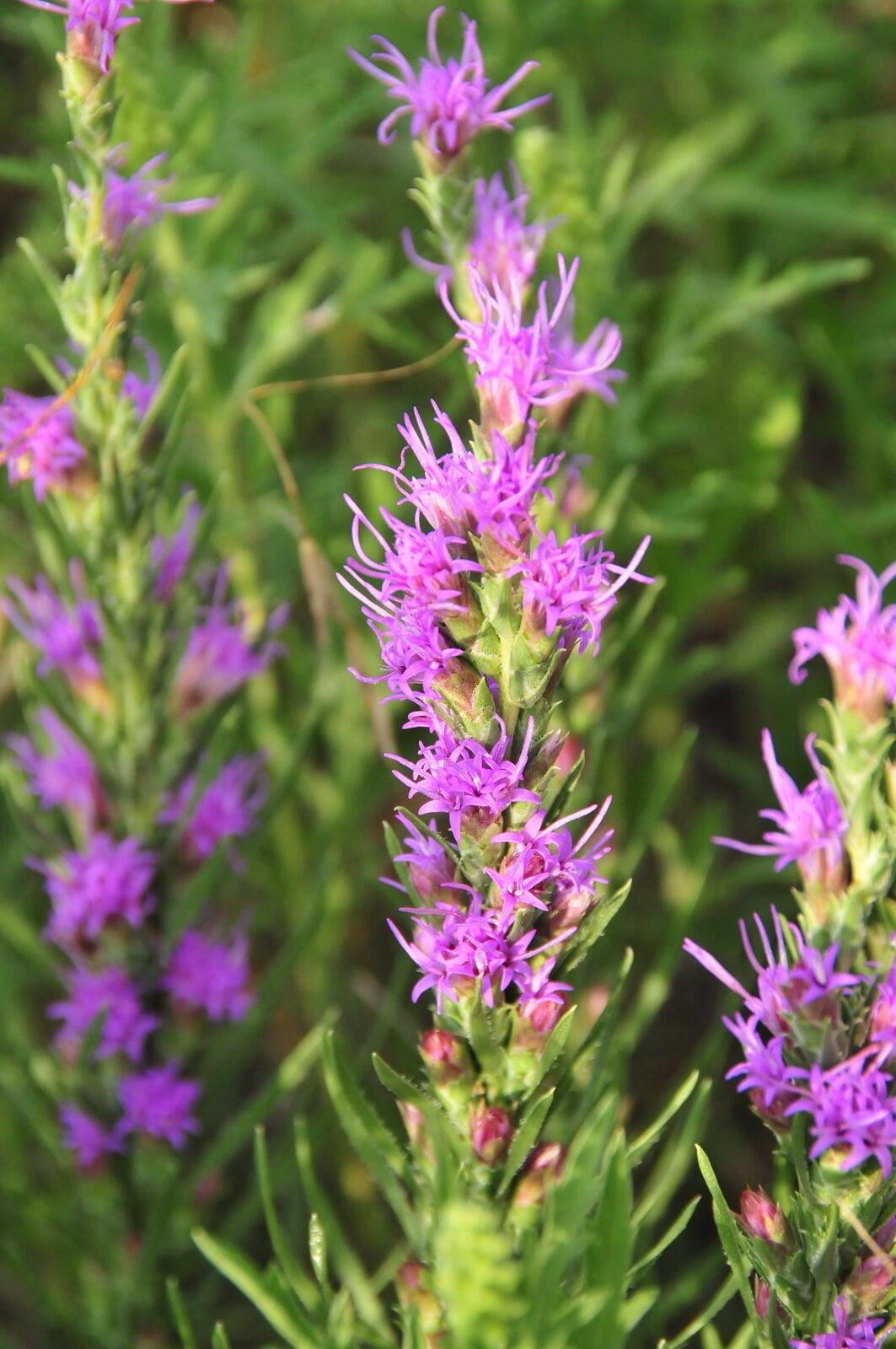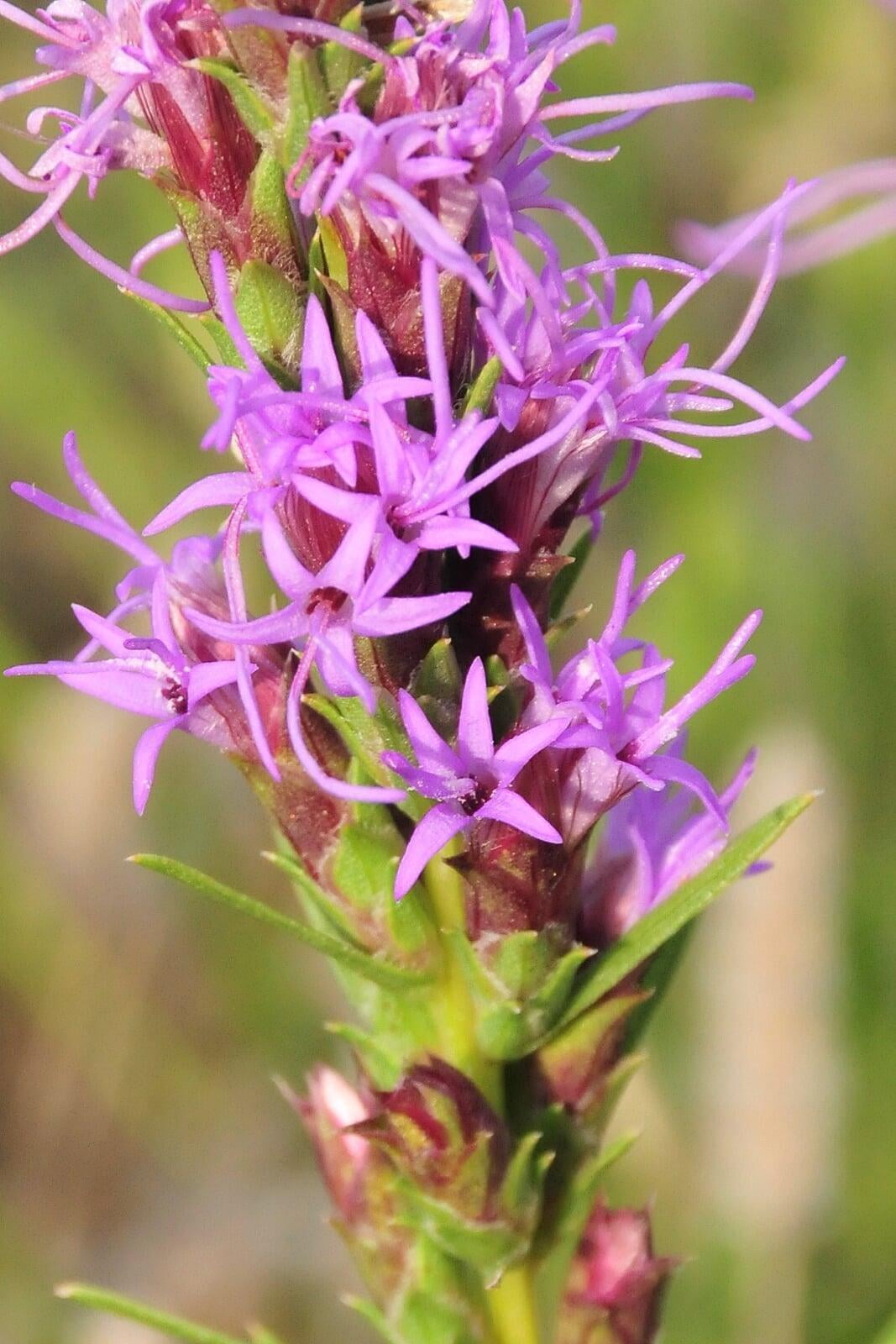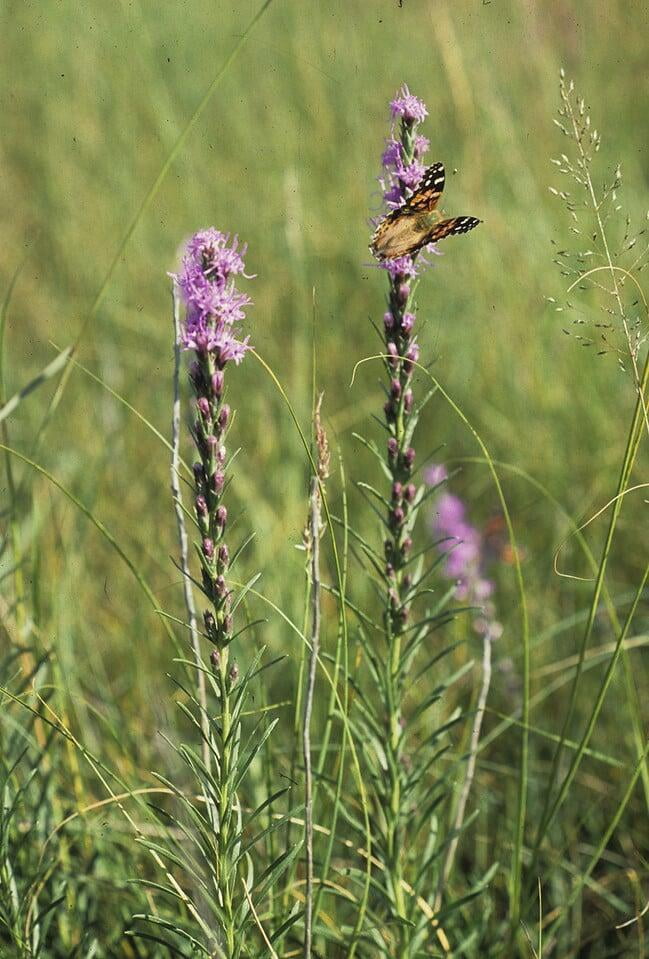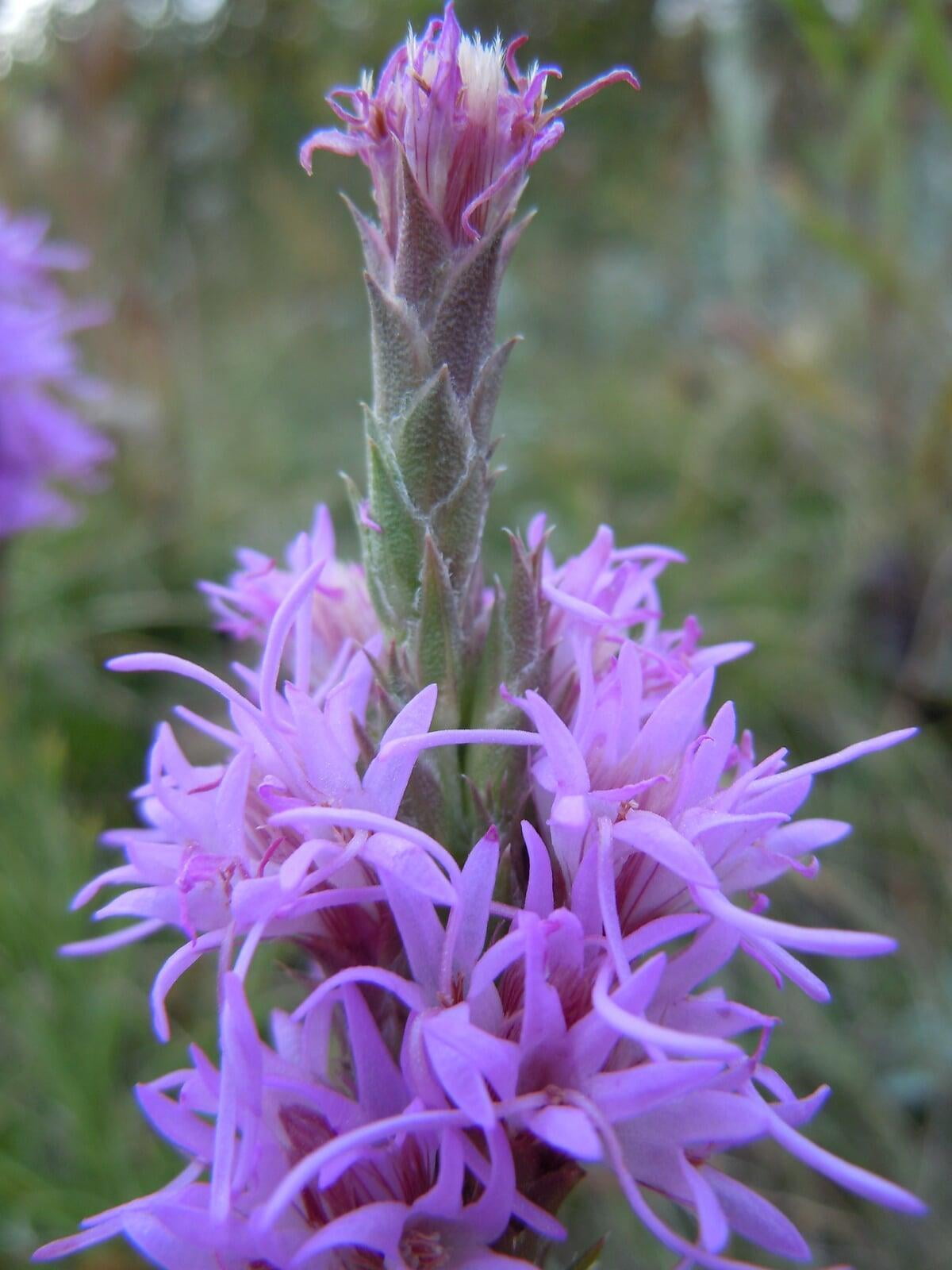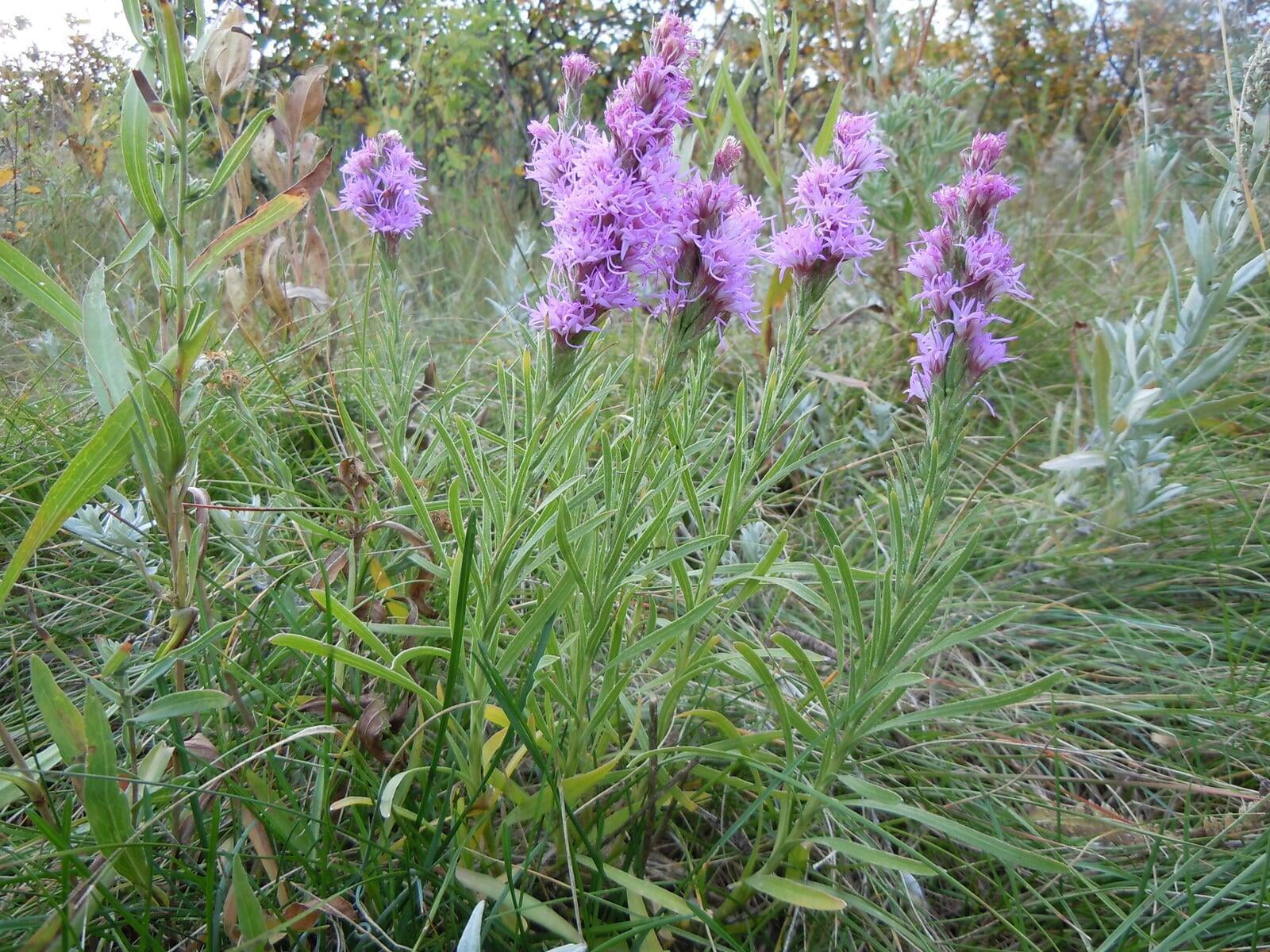Liatris punctata
Dotted blazing star Description:
Liatris punctata, commonly known as dotted blazing star, is a herbaceous perennial plant native to North America. It typically grows to a height of 1 to 2 feet (30 to 60 cm) and has a clumping habit with narrow, grass-like leaves that are up to 10 inches (25 cm) long.
In mid to late summer, Liatris punctata produces tall, upright spikes of small, lavender to pale pink flowers that bloom from the top down. The flowers are densely packed and surrounded by showy bracts, giving the spike a fluffy, cylindrical appearance. The blooms are attractive to butterflies, bees, and other pollinators, making it a valuable addition to pollinator gardens.
Liatris punctata prefers full sun to partial shade and well-drained soils that are rich in organic matter. It is drought tolerant once established and can tolerate a range of soil types, including sandy and rocky soils. It is a hardy plant that can withstand cold temperatures and is generally pest and disease resistant.
Overall, Liatris punctata is a beautiful and low-maintenance perennial that can add color and interest to a variety of garden styles, including rock gardens and prairie gardens. It is also sometimes used for medicinal purposes by Native American tribes.
Native Range:
Dotted blazing star is found growing natively in central United States.
Standard Plant Information:
Plant Height: 1' - 2'
Bloom Time: July - September
Preferred Habitat: Does well in sun with dry, sandy soil. Often found in prairies.
Sowing:
For most homeowners, the best option is to scatter seed on the ground by hand broadcasting at a minimum of 16-64 pls ounces per acre. For even coverage, we recommend that you broadcast seed in perpendicular rows across the site to ensure even coverage.
You’ll want to broadcast any grass seed first, which will get raked into the soil lightly. Next, it is ideal to mulch the area lightly with either a clean (no seed) straw or preferably with our native Little Bluestem straw, sold at our retail garden centers. After a light mulching is complete, now it’s time to broadcast your native wildflower seeds, which should not be raked into the soil. A good rain or watering is sufficient to cover the seed.
Planting:
Simply dig a hole in the soil slightly larger than the plant’s roots. Ensure that the soil line of the plant is maintained during the transfer (i.e. the plant should be at the same level with the ground as it was in the pot). Pack any loose dirt back around the plant and make sure you water it well the same day to ensure it has the best chance of survival.

